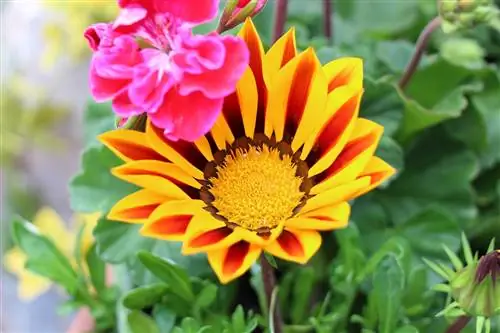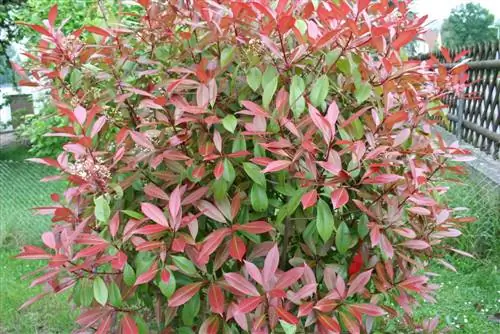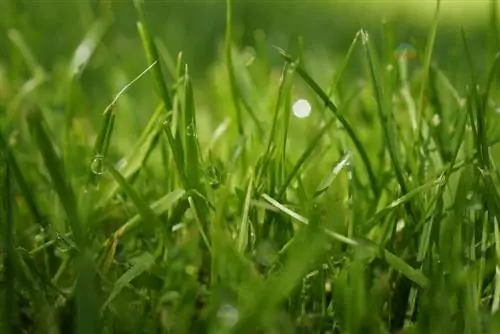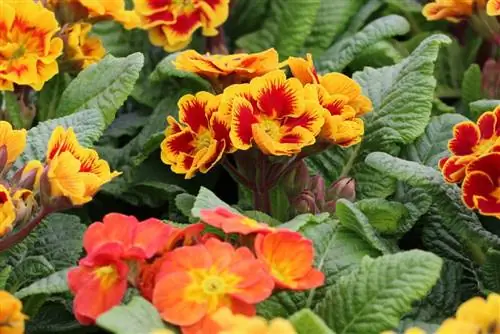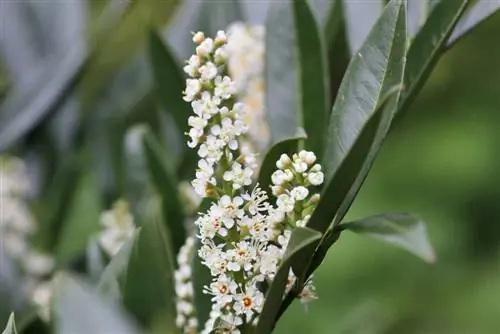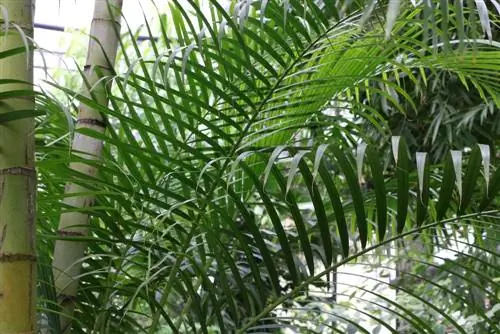- Author admin [email protected].
- Public 2023-12-17 03:39.
- Last modified 2025-01-24 12:45.
Gazania is a popular ornamental plant that grows in parks and gardens during the summer months. The large flowers create a summery atmosphere. Your requirements are special in winter.
Choose frost-resistant cultivars
Midday gold flowers grow in their homeland as herbaceous plants that survive with the help of woody rhizomes. They rarely develop into subshrubs whose shoots become woody at the base. Since the climatic conditions in Central Europe differ greatly from the South African weather, the plants are predominantly cultivated as annuals. They are not hardy and after a warm winter indoors they bloom less profusely than in the first year. There are a few varieties that are suitable for perennial cultivation and are considered hardy. These varieties survive the frosty season outdoors and sprout reliably in spring:
- Gazania linearis 'Colorado Gold' can tolerate temperatures down to -28 degrees
- Gazania krebsiana 'Tanager(R)' has no problems with minus temperatures in the double-digit range
- Gazania x 'Bronze Red' tolerates around ten degrees below freezing
Pull cuttings
Gazania cuttings propagate in late summer, so that the young plants are grown over the winter months. Above-ground growth stagnates during this dormant period. However, the plants use the energy they absorb for root development. An advantage of this method is that you maintain the growth characteristics and flower colors of the variety.

If you want to cultivate midday gold for longer than one season, grow cuttings:
- cut off strong 15 to 20 centimeter long shoots
- remove lower leaves and buds
- Put half of the cutting in nutrient-poor potting soil
- Place the vessel in a bright and warm location
- Moisten the substrate regularly and allow it to dry slightly in the meantime
- place in a larger pot in spring
Dig up outdoor plants
In the open field, the daisy family is not able to survive when winter sets in. It is possible to overwinter Gazania as container plants in a frost-free area. However, this approach involves a lot of effort and results in high failures. Often the plants no longer grow vigorously after overwintering. They form long, flaccid leaves and have limited flowers. If you still want to try it, follow these steps:
- Get midday gold flowers out of the ground before the first night frosts
- wait for a cloudy day with mild temperatures
- Pick off the root ball generously without damaging the roots
Replace substrate
In nature, plants thrive on poor strips of soil. They thrive in soil that is slightly acidic and contains silicate. The natural habitats are characterized by barren soils that arise on mica slate. When cultivated, the daisy family requires a constant supply of nutrients that is neither too high nor too low. Too many nutrients cause the plant to produce hardly any flowers and a lot of leaf mass. A subtle concentration of nutrients in the substrate supports growth and prevents the plants from running out of energy in the second half of winter. If you cultivate the ornamental perennials in a container, repot them in the fall. Outdoor plants also enjoy a substrate exchange. Proceed as follows:
- mix five parts cactus soil with three parts primary rock soil and two parts sand
- Remove 50 percent of the old soil without knocking out the root ball
- Plant Gazania in fresh substrate mixture and water lightly
Tip:
Place the plant in a slightly oversized flower pot. This means that the roots do not come into direct contact with the nutrients after repotting and the soil volume serves as a moisture buffer.
Ensure optimal conditions
Sonnentaler, as Gazania are sometimes called, originally come from the winter rain region of South Africa and Namibia. The South African climate is rainy in the winter months with nighttime temperatures between ten and 15 degrees, while the thermometer rises to 20 to 25 degrees during the day. From May to August the weather is low in precipitation with mild temperatures that fall slightly below five degrees at night and rise to more than 15 degrees during the day. In order to overwinter your Gazania successfully, you should focus on the summer conditions in its original distribution area, because during this time the plants go into a growth break in their homeland. The change in temperature is particularly important for successful wintering. The wintering quarters should offer these conditions:
- Night temperatures between five and ten degrees Celsius
- Daytime temperatures from 15 to 20 degrees
- bright with good lighting and no direct sun
Tip:
East and west windows prove to be well-suited locations. Since it is often too dark in the winter months, you should turn on a plant lamp for eight hours.
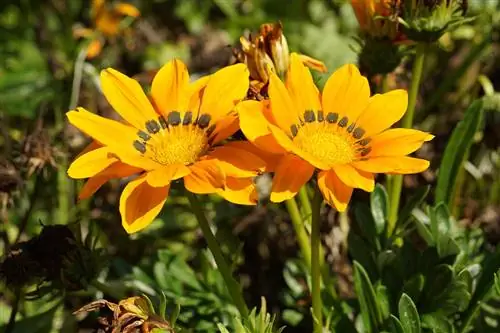
Ensuring water balance
Gazanias develop spatula-shaped leaves that are predominantly arranged basally. While the underside of the leaf is woolly, the upper side appears bare or hairy like a cobweb, depending on the species. These structures are adaptations to the environmental conditions and prevent the plant from losing too much water during the low rain period in combination with high levels of sunlight. At the same time, dewdrops collect in the hair during the night, which are available as a source of moisture for the midday gold. Since the substrate in the winter quarters at home dries poorly due to the lack of sun, mold and pest infestation can quickly occur. If you overwinter the ornamental plants, proceed as follows:
- Wet the leaves with moisture
- Only moisten the ball of soil in the pot superficially
- Pour 90 percent of the water into the saucer
- drain excess water after 24 hours
Note:
The water supply follows a four-day rhythm. Let the gazania rest for three days and repeat the process on the fourth day.

